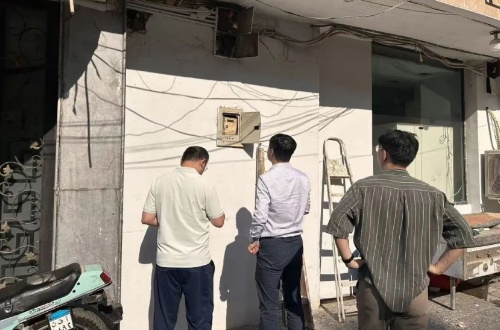Newest
-

LTG is about to be listed on BiFinance, the world's most fully licensed exchange, aiming to usher in a new chapter for the Bitcoin Depin ecosystem through the Lightning Network.
-

China Southern Power Grid's First Overseas Distribution Network Loss Reduction Pilot Project—the South Cairo, Egypt Project—has Successfully Passed Acceptance
-

AIX Incubator Secures U.S. SEC Filing Approval and MSB License, Advancing Its Global Compliance Strategy
-

RWA2035 Global Digital Economy Strategy Summit to Debut in Boao on January 4, 2026
Sequences and sources of diagenetic fluid in Leikoupo Formation, Western Sichuan
 2021-12-15
2021-12-15
CHEN Zhiyuan1,2, MENG Xianwu2, SONG Xiaobo2, HAO Xiaobo3, LONG Ke2
1. Post-doctoral Research Station, Southwest Oil & Gas Company, SINOPEC, Chengdu 610041, Sichuan Province, China;
2. Research Institute of Petroleum Exploration and Production, Southwest Oil & Gas Company, SINOPEC, Chengdu 610041,
Sichuan Province, China;
3. Well Testing Company, CNPC Xibu Drilling Engineering Company Limited, Karamay 834000, Xinjiang, China
Abstract: Through thin-section observation and cathodoluminescence, a comprehensive study of the filling sequence of diagenetic minerals in the fourth member of the Leikoupo Formation (T2l4) is carried out using the geochemical data of fluid inclusions and C, O, and Sr isotopes to clarify the sequences and sources of diagenetic fluids in Leikoupo Formation, Western Sichuan Basin. The results show that the filling minerals of different grain sizes in T2l4 in Western Sichuan Basin can be divided into three stages with filling sequences as follows: micro-crystalline powder dolomite and calcite in stage I, fine crystalline dolomite and calcite in stage II, and medium crystalline dolomite, calcite, and intercalated crystalline dolomite in stage III. The three stages are roughly the early–late Late Triassic (232–214 Ma B.P.), the latest Late Triassic–the latest Late Jurassic (212–145 Ma B.P.), and the Early Cretaceous–the latest Late Cretaceous (142–70 Ma B.P.), respectively. The C, O, and Sr isotopes of matrix dolomite and infill in pores and fractures in T2l4 show that the diagenetic fluid exhibits the geochemical characteristics of normal marine carbonate rocks. Also, it is revealed that the high 87Sr/86Sr in T2l4 results from the fluid intrusion of capillary concentration, infiltration and backflow in the syngenetic-quasi syngenetic period amid evaporation tidal flat, and the release of sealed sea water during the burial period.
